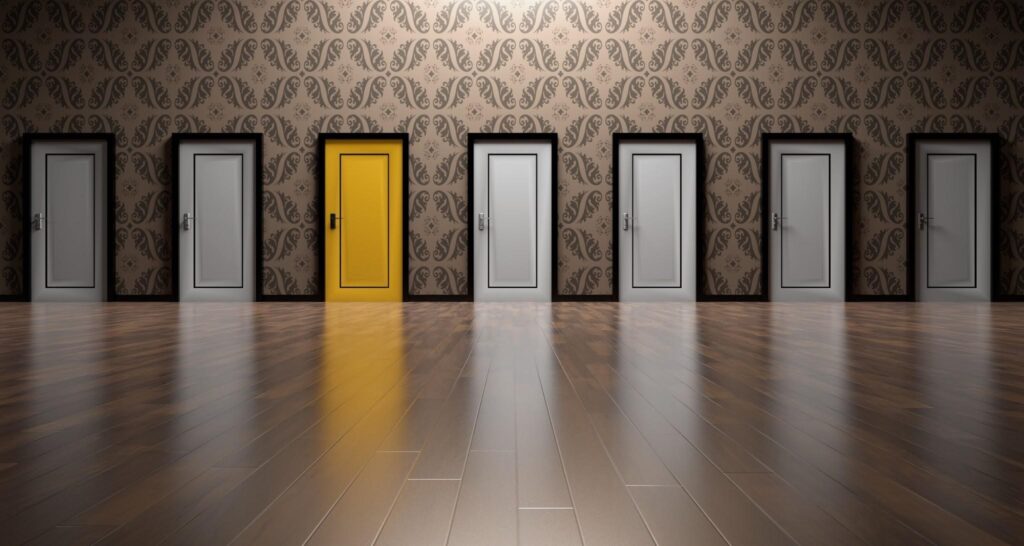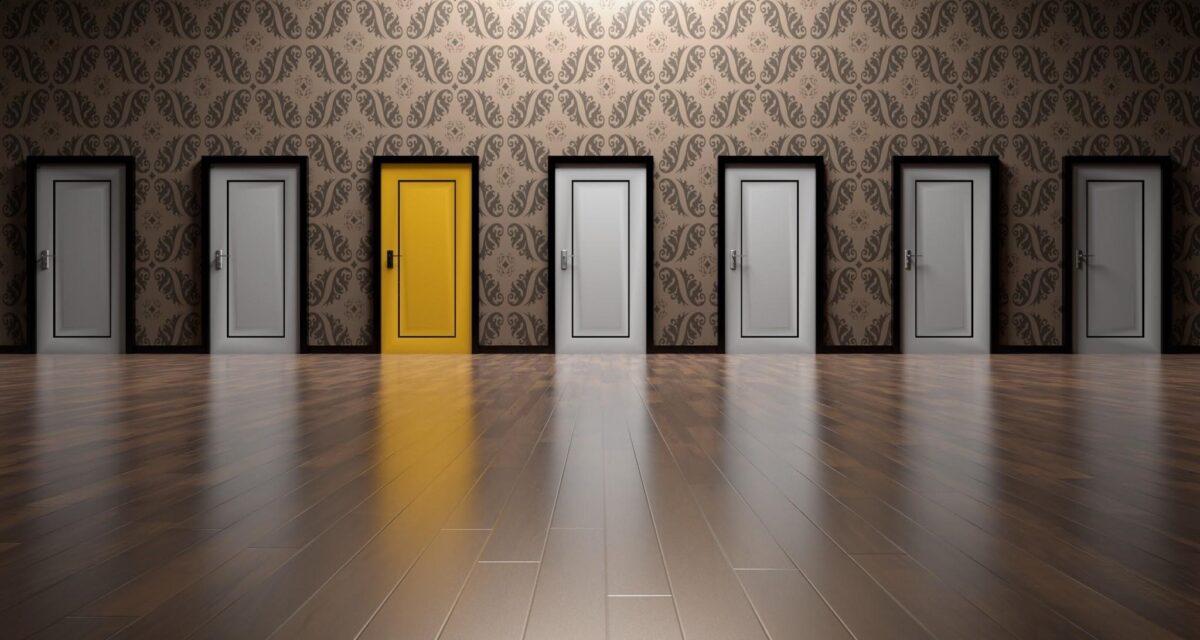How to Build a Thrilling DIY Escape Room at Home: Tips, Tricks, and Challenges
TL, DR
With a DIY escape room at home, people can have fun while trying to solve problems and do so in the most creative way. You should begin by choosing a theme such as mystery, treasure hunt or even a zombie apocalyptic environment.
Offer the participants a clear goal, e.g. to solve a puzzle or open the last door. Observe and prepare the space well and use furniture and things like locks, riddles, and other props hidden in the space. Random selection of a type or theme of a puzzle, at least in the individual segments of a show, can be an ineffective approach.
However, successful shows combine such puzzles as logical tasks, physical tasks and multistep clues and keep the show’s storyline wholesome.
Time limits make the game more interesting, and having a game master allows the flow of the game rules to be managed and gives hints in case they are needed. Test the game well to get the right level of both challenge and pace so that a player is not frustrated.
Increase the fun factor by spicing it up with features like red herrings bonus tasks or opening new areas. Make it more enjoyable for kids, teens and adult teams, and always reward success with fun or game-related prizes.
At the end of the game, the executive should ensure that needs to be met in future product designs are determined. It is possible to design an escape room that works just as well as a professionally designed one, with what equipment you have, a little brainstorming and good planning.
How to Build a Thrilling DIY Escape Room at Home: Tips, Tricks, and Challenges

Escape rooms are one of the most popular trends now; they represent entertaining and rather effective puzzles for people who like to solve problems and act in teams.
Although an escape room is professionally designed, people can come up with a great homemade escape room to have some fun during family holidays or other celebrations or as a kind of team-building activity.
In this article, you will find instructions on how to create an engaging escape room that will leave your participants stimulated and involved.
1. Choose a Theme
Choosing a theme should be the first process in constructing the DIY escape room at your home. The theme determines the style of the game, puzzles, decoration, and idea behind the approach.
Some of the most popular themes for an amazing diy escape room include:

- Mystery Mansion: This game depicts a murder mystery, and the players perform the role of detectives who investigate a murder.
- Treasure Hunt: Individuals look for a hidden item or something valuable or precious, and the one who solves the most treasure wins the game.
- Time Travel: After travelling back in time, the team must repair a time machine to return to the present.
- Zombie Apocalypse: Participants cannot get the injection themselves but must find a cure to get rid of the virus.
- Space Mission: This escape room is all about finding a way to fix a spaceship and get back to Earth while solving the puzzles.
If you pay attention to details and prepare the escape room in the right way, it will add a level of immersion to your escape room, making the overall experience more engaging.
Some puzzles, on the other hand should be tailored to fit the environment, and every one of these puzzles should reflect the plot line.
2. Define Your Goal
Every escape room has its goal. It could be the final door on a game, the endpoint of a treasure hunt, or the solution to any mystery that is being solved. To make the goal clear, create a short text to engage the players and explain why they should work for the success of the player’s character.
For instance, Backstory for a Mystery Mansion: In this tragedy, ‘You are both private detectives looking into the death of a reigning tycoon.’ The survival clock shows that you have 60 minutes before the killer gets back; try to look for evidence there.
When the goal is clearly set, participants stay on track and feel great satisfaction when they achieve their goal.
3. Plan the Space
Your DIY escape room doesn’t have to be confined to one room; let it take up an entire house. However, if planned in one room, a basement or even a backyard, it would also do just fine, depending on your chosen theme. What you need to do to plan your escape room space is;
- Identify key zones: Separate some of the space to be a zone for one game or activity and another zone for the other.
- Use furniture creatively: Bury things in a drawer, behind the curtain or under the table.
- Control lighting: If you try to light the room in such a manner as to make it look rather suspenseful, do not make it too dark for players to notice important things.
- Secure off-limits areas: Whatever is out of bounds for participants should be labelled with tape, a sign or a barrier put around it.
4. Design the Puzzles
Puzzles and games are the essence of every Escape Room. As much as possible, look for a broad level of difficulty that will accommodate different levels of learners and processes of reasoning.
Here are some puzzle ideas:
1. Logic Puzzles
Design word problems, construction of number puzzles such as Sudoku, or problems based on patterns that necessitate applicative thinking. For example:
- “The key is hidden where the day of the week meets a colour of the rainbow.” (Answer: A box labelled “Sunday-Red”).
2. Physical Challenges

Include tasks that demand the wizard to change the items in the character’s hand. Examples include:
- Using the right combination when opening a lock with a wheel.
- An early childhood education activity demonstrating letter and word identification in a jigsaw puzzle of a face with the letters on the pieces spelling out a word that is a clue to an answer.
3. Hidden Clues
Increase the creativity of the exercise by burying stuff in obscure locations. Examples:
- A note taped under a chair.
- Writing on a piece of paper, which, when taken under ultraviolet light, will reveal a secret message.
4. Interactive Props
You can try to make ordinary objects serve dual purposes. For example, Design a maze in a box where participants control a marble in order to figure out the next word; or a mirror to understand a message that is written in the backward style.
5. Multistep Challenges
Use parts that are assembled as a puzzle, and solve it with several phases. For instance:
- Solve a riddle to find a map.
- Read the map to find a key.
- Open a chest with a key to grab the last clue in the house.
5. Assemble Props and Supplies
Props make your escape room real. Depending on your theme, gather items like:
- Locks and Keys: Locks that have buttons to be pushed, padlocks and key safes also enhance the real-life escape room.
- Puzzles and Riddles: Print or make a puzzle related to your storyline.
- Decorations: You can use extra cutlery or other things for setting up decorations.
- Special Effects: Accompany your performance with lightning, allowed sound effects, flashes, or smokescreen LED lights etc.
6. Set Time Limits
The impending time that is placed on each escape room as a general factor cannot be overemphasized. Determine how much time players will have to complete the challenge.
Usually, it should take 45-60 minutes after the start. The staged countdown timer should be on the screen of the game so that players feel the heat as the time counts down.
7. Test the Room
It is important to try out the escape room before inviting other people into it. This should be done by contacting friends or relatives to help use the services and then giving their opinion on the same.
Observe how they interact with the puzzles and adjust for:

- Difficulty Level: Make sure that puzzles are not too hard to solve but also not easy.
- Flow: Clues should follow sequences of any given type or otherwise in a descending order that is logical.
- Pacing: This means that an organization should occasionally implement simpler change initiatives to offset other more difficult change projects in order to sustain interest.
8. Prepare a Game Master
No escape room hall can lack a game master who will be supervising the entire escape room hall activity. Their role includes:
Explaining the line between the outside world and the show, as well as the written and spoken parts of the show.
If a player seems to have got stuck somewhere, sometimes it is helpful if one is designing a game to give the necessary clues.
Safety check and make sure participants do not destroy the prop or harm themselves in any way.
The game master should not go out of their role; this is because the whole idea of the game is to act out roles and functions expected in a simulation game.
9. Work with Challenges and Twists
To keep players on their toes, introduce surprises or twists, such as:
- Red Herrings: I responded: Things that look like they matter but are red herrings and take you in circles.
- Hidden Time Extensions: Give bonus time to players when they have to accomplish some tasks.
- Locked Areas: Allow the players to unlock other parts of the room as they go along.
All these factors provide extra dimensions and interest.
10. Customize for Different Ages and Different Categories of Person

Customize your escape room for your audience:
- Kids: Children are often attracted by drawings, which should be used to make the puzzles easier and less complicated and to use cartoonish objects such as ‘the treasure map’.
- Teens: Add more puzzle-solving cases and make them a little more ‘creepy’.
- Adults: Include complex Nonograms, high-quality and complex topics, and increased difficulty levels.
11. Create a Reward System

It is also important to distinguish success by organi zing a reward to have a memorable experience. Ideas include:
- Certificates of completion.
- Chocolates in figurines that represent the theme of the event like mini treasure coins.
- A post-celebration photo with items to be posted on social media platforms.
12. Learn and Improve
Each DIY escape room is its educational process. As soon as the game is completed, it will be necessary to get the reactions from players to understand peculiarities and weaknesses.
Did the puzzles make sense? Was the degree of challenge selected adequate? Apply this concept the next time you are designing a web page layout.
Final Thoughts
Constructing an escape room at home is a creative process, and making one on your own will be quite beneficial. What’s more, part of the fun of making your own escape room is the ability to design and plan it all yourself so you can create something just as enthralling as many professional setups with enough time, creativity, and ingenuity.
It may be a birthday party, just a family night, or a weekend adventure, but your escape room will remain a unique experience for everyone. So stand to your feet and set the game designer in you free and the adventures are right from here!

